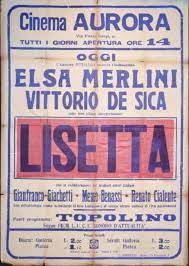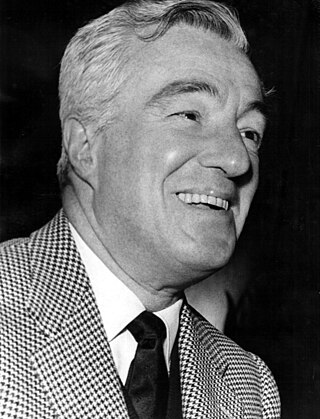
Vittorio De Sica was an Italian film director and actor, a leading figure in the neorealist movement.

Italian neorealism, also known as the Golden Age of Italian Cinema, was a national film movement characterized by stories set amongst the poor and the working class. They are filmed on location, frequently with non-professional actors. They primarily address the difficult economic and moral conditions of post-World War II Italy, representing changes in the Italian psyche and conditions of everyday life, including poverty, oppression, injustice and desperation. Italian Neorealist filmmakers used their films to tell stories that explored the contemporary daily life and struggles of Italians in the post-war period. Italian neorealist films have become explanatory discourse for future generations to understand the history of Italy during a specific period through the storytelling of social life in the context, reflecting the documentary and communicative nature of the film. Some people believe that neorealistic films evolved from Soviet montage films. But in reality, compared to Soviet filmmakers describing the people's opposition to class struggle through their films, neorealist films aim to showcase individuals' resistance to reality in a social environment.
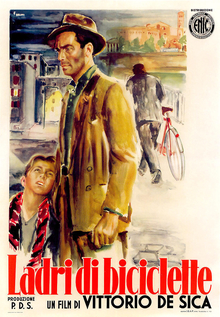
Bicycle Thieves, also known as The Bicycle Thief, is a 1948 Italian neorealist drama film directed by Vittorio De Sica. It follows the story of a poor father searching in post-World War II Rome for his stolen bicycle, without which he will lose the job which was to be the salvation of his young family.
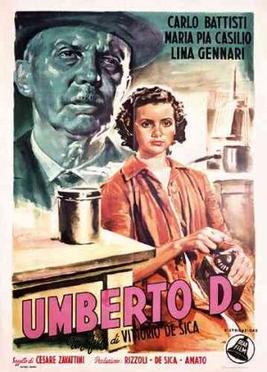
Umberto D. is a 1952 Italian neorealist film directed by Vittorio De Sica. Most of the actors were non-professional, including Carlo Battisti who plays the title role of Umberto Domenico Ferrari, a poor elderly man in Rome who is desperately trying to keep his rented room. His landlady is evicting him and his only true friends, the housemaid and his dog Flike are of no help.
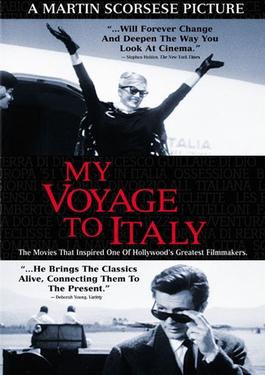
My Voyage to Italy is a personal documentary by acclaimed Italian-American director Martin Scorsese. The film is a voyage through Italian cinema history, marking influential films for Scorsese and particularly covering the Italian neorealism period.

Piero Piccioni was an Italian film score composer.

Miracle in Milan is a 1951 Italian fantasy comedy film directed by Vittorio De Sica. The screenplay was co-written by Cesare Zavattini, based on his novel Totò il Buono. The picture stars Francesco Golisano, Emma Gramatica, Paolo Stoppa, and Guglielmo Barnabò.

Telefoni Bianchi films, also called deco films, were made by the Italian film industry in the 1930s and the 1940s in imitation of American comedies of the time in a sharp contrast to the other important style of the era, calligrafismo, which was highly artistic. The cinema of Telefoni Bianchi was born from the success of the Italian film comedy of the early 1930s; it was a lighter version, cleansed of any intellectualism or veiled social criticism.

Maddalena, Zero for Conduct is a 1940 Italian "white-telephones" comedy film directed by Vittorio De Sica. It is a remake of the Hungarian film Magda Expelled (1938).
Pasquale "Pasqualino" De Santis was an Italian cinematographer.

The Man Who Smiles is a 1936 Italian "white-telephones" comedy film about an Oedipus Complex, directed by Mario Mattoli. The film stars Vittorio De Sica, Umberto Melnati, Enrico Viarisio, Assia Noris and Paola Borboni. It is based on a play by Aldo De Benedetti.It was shot at the Tirrenia Studios.
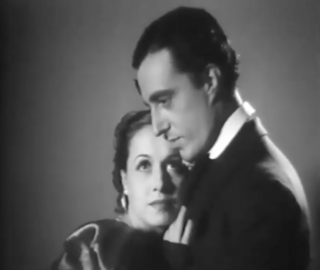
I Love You Only is a 1935 Italian historical drama film directed by Mario Mattoli and starring Milly, Vittorio De Sica and Giuditta Rissone.
Triumph of Love is a 1938 Italian comedy film directed by Mario Mattoli and starring Paola Barbara, Vittorio De Sica and Giuditta Rissone.
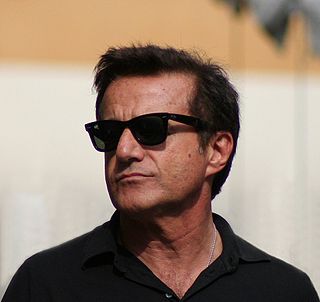
Christian De Sica is an Italian actor, comedian and film director.
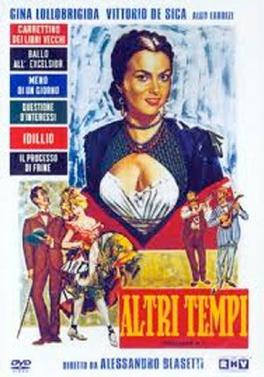
In Olden Days is a 1952 Italian comedy drama anthology film directed by Alessandro Blasetti and featuring an ensemble cast that included Gina Lollobrigida, Amedeo Nazzari, Vittorio De Sica, Elisa Cegani, Barbara Florian, Aldo Fabrizi, Andrea Checchi and Alba Arnova. It was shot at the Cinecittà Studios in Rome. The film's sets were designed by the art directors Dario Cecchi and Veniero Colasanti. It is also known as Times Gone By and Infidelity.
Red Roses is a 1940 Italian "white-telephones" comedy film directed by Vittorio De Sica and Giuseppe Amato and starring De Sica, Renée Saint-Cyr, and Vivi Gioi. It was De Sica's first film as a director. De Sica had previously appeared in a 1936 production of the stage play by Aldo De Benedetti on which it was based. It was shot at the Cinecitta Studios in Rome. The film's sets were designed by the art director Gastone Medin.

A Garibaldian in the Convent is a 1942 Italian historical comedy drama romantic film directed by Vittorio De Sica and starring Leonardo Cortese, María Mercader and Carla Del Poggio. It is considered to be the work with which De Sica concludes the series of light comedies largely set in colleges and institutions for young girls and period costumes to enter into films of more contemporary and popular settings that will result in post-war neorealistic works. It was screened in November 1991 as a part of a retrospective of De Sica's films at the Museum of Modern Art. It was shot at the Palatino Studios in Rome. The film's sets were designed by the art director Veniero Colasanti.
Paprika is a 1933 Italian "white-telephones" comedy film directed by Carl Boese and starring Vittorio De Sica. A German-language version Paprika and a French version Paprika were also made.

Peddlin' in Society or Down With Riches! is a 1946 Italian romance-drama film directed by Gennaro Righelli. it was a loose sequel to the 1945 film Down with Misery by the same director and also starring Magnani.

Salvo D'Angelo was an Italian film producer. He also worked as an art director and production designer.
